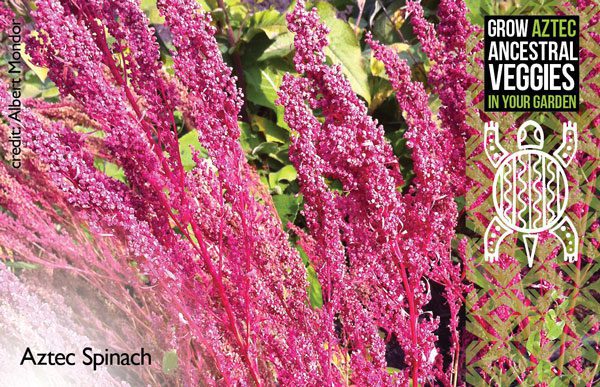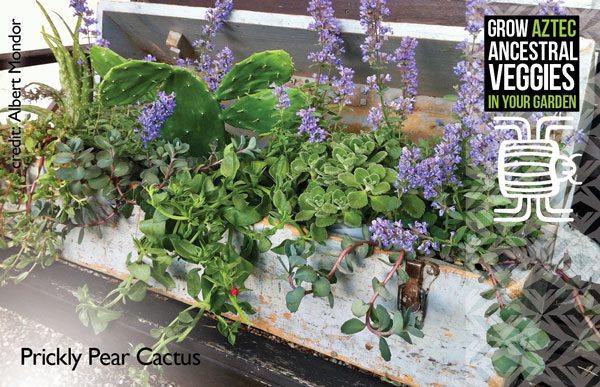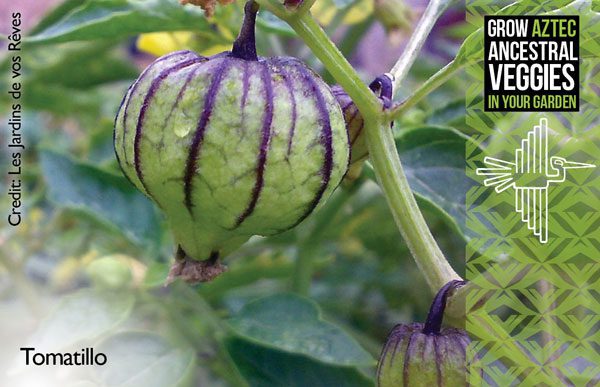If looking for an exotic touch in your garden this summer, consider growing edible plants from hot Central America. Mayans and Aztecs cultivated these plants in the pre-Columbian era before the coming of the Europeans. By growing them in your garden, you will feel like you’re traveling without moving!
Cucamelon

Cucamelon is a climbing plant that yields an abundance of small, greyish-green fruits resembling little melons all summer long.
Native to Mexico and Central America, the plant’s fruits taste like cucumber with a slight hint of bitterness. They can be eaten raw in appetizers and salads, or pickled. You can mix fresh or pickled cucamelons in a bowl with black olives to serve with drinks, or spear them on a toothpick for a martini!
Similar to cucumbers, cucamelon does well in full sun, either in pots or in the ground, and in compost-rich and fresh soil. However, unlike cucumber, cucamelon requires little care since insects and diseases rarely attack it. This plant can crawl on the ground, but it prefers to climb on an obelisk or lattice. It can also be grown as a hanging plant in a container or a green wall.
Aztec Spinach

A close relative of quinoa, Aztec spinach is a spectacular vegetable plant, especially at the end of the summer when its leaves and fruits turn to a bright red hue.
The leaves, flowers, and seeds of this plant of Mexican origin are edible and highly nutritious. Its leaves have a sweet flavor reminiscent of spinach, while its flowers can be cooked like broccoli. The seeds can be prepared and eaten as a staple food. Like rice, they can also be ground up into a flour. Although some people eat raw Aztec spinach, it is best to cook it before eating because it contains saponins, slightly toxic substances that are degraded by heat.
Very easy to grow, Aztec spinach adapts well in various environments. It even grows in a clay soil amended with some compost. Once established, this plant tolerates drought quite well. It is easy to propagate Aztec spinach either by sowing it into pots or in the ground.
Prickly Pear Cactus

Prickly pear, a cactus called nopal in Spanish, has edible stems and fruits. In the pre-Columbian period, this adaptable plant was spread all over North America and the Caribbean by indigenous peoples. Early Spanish sailors used it on long sea trips as protection from scurvy, and as a result, the plant also ended up in Africa and Europe.
Raw or cooked on a BBQ, the stems of this cactus make a delicious garnish for hamburgers and tacos and is also a great addition to salsa. You can serve it for breakfast or dinner, sliced in strips and fried with eggs and jalapenos. Take special care to buy and grow a needleless variety.
Prickly Pear also produces a fruit known as tuna, which is commonly eaten in Mexico. It is used to make jams, jellies, and aguas frescas, a refreshing drink made of water and fruits.
Highly resistant to drought, prickly pears require little care and watering when grown in pots. In Canada (except in BC) and the northern US, it should be brought inside before winter since old specimens can’t withstand temperatures under –12 °C (10.5°F). Hardiness varies from one variety to another, but most young prickly pears are severely affected by a temperature of –5 °C (23°F).
Tomatillo

Tomatillo is the fruit of a plant related to peppers, tomatoes, and ground cherries. Like the latter, each tomatillo is surrounded by a yellowish-green envelope.
Tomatillos originated in Central America and were cultivated in the pre-Columbian era long before the arrival of the Europeans. This edible plant played an important role – more than tomatoes – in the Aztec and Mayan cultures.
Tomatillo is the main ingredient of the famous Mexican salsa verde. It can also be used in a variety of dishes like ratatouille and spaghetti sauce. Be careful, because fruits that have not reached full maturity contain solanine, a toxic alkaloid. Be sure to pick your tomatillos when they’re completely ripe.
Like tomatoes and peppers, tomatillos will give best results when grown in full sun and in fertile and humid soil. They grow best in hot locations with temperatures between 25-32°C (77-90°F). Growth is usually stunted when the air dips below 15°C (59°F).